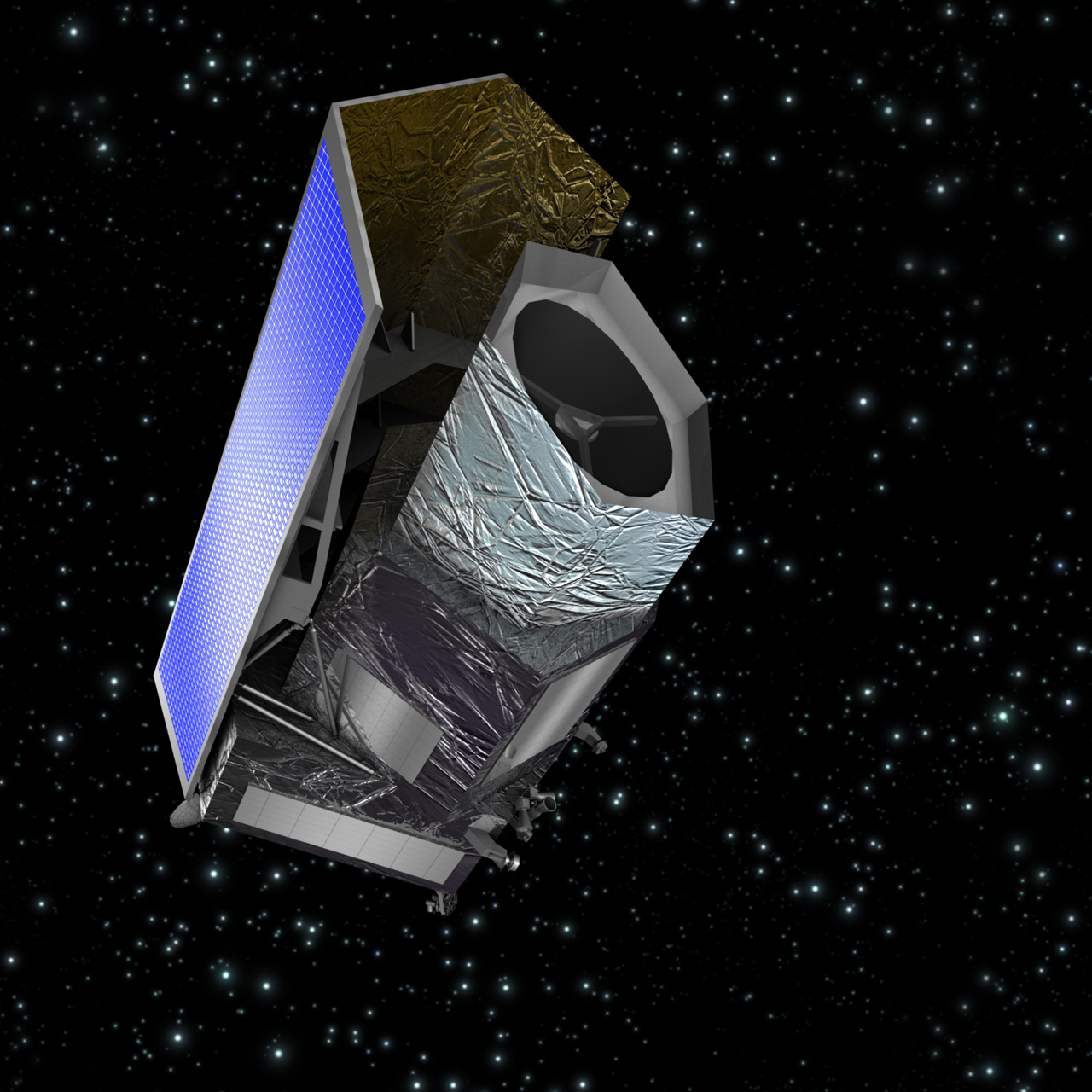Euclid mission to map the Universe’s darkest secrets
25 June 2012
ESA has given the final go-ahead for Euclid, an exciting new mission to explore the dark side of the Universe. The spacecraft is expected to lift off in 2020.
Euclid is named after a famous Greek mathematician, often referred to as the “Father of Geometry”, who lived around 300 BC. Its mission is to search for evidence of invisible dark energy and dark matter, which are believed to account for more than 95% of the material that makes up the Universe.
Dark matter is invisible material that does not emit or absorb any type of light, so it is only detectable through the way its gravity affects galaxies and galaxy clusters. Even more mysterious is dark energy, which is thought to produce a sort of “anti-gravity” force that causes the galaxies in the Universe to move apart faster and faster.
Euclid will carry a 1.2 m diameter telescope and two scientific instruments. Orbiting 1.5 million km from Earth, it will map the 3D distribution of up to two billion galaxies, spread over more than one third of the entire sky. Observing objects up to 10 billion light years away, it will look back in time to reveal how the Universe has expanded and changed during the last three-quarters of its history.
By using Euclid to study how dark matter and dark energy influence the motion and distribution of galaxies and clusters of galaxies, scientists hope to gain a better understanding of the Universe’s darkest secrets.





